1. Add more vegetables.
Eating vegetables plays an important part in our health and wellness, and we all know that we should eat more! To promote good health it is important to eat fruits and vegetables of varied color. Getting kids excited about their veggies can be challenging. Talk to your kids about eating their colors. I like to get them excited by giving them a little challenge to see how many colors we can eat at each meal, or each day. In our family course we have an awesome Phytonutrient checklist for the whole family!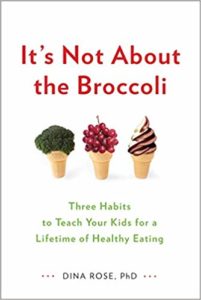
Other ways to up your family’s veggie intake could be in smoothies or soups. Try using lettuce or even cabbage leaves as wraps. Spiralize them to use as noodles. Have veggies like carrot sticks, cucumbers, celery, and bell peppers prepped and chopped in the fridge as easy to grab snacks.
2. Drink plenty of water.

Hydration increases metabolism and energy, improves brain function, digestion, and absorption of nutrients. It helps kidney and cardiovascular health and prevents constipation while keeping skin healthy and glowing. Strive to drink 1/2 your body weight in ounces (up to 100 ounces) a day in water. I know that sounds like a LOT but just do your best. If you want to get fancy you can get this awesome bottle that tracks your water intake for you!
3. Swap out foods for more nutrient dense options.
Ditch the sugary drinks and opt for fruit infused water or tea instead. Choose whole grain over refined. Add in flax or chia. Swap out nutrient dense flours when baking, like almond flour or Bob’s Red Mill Gluten free flour mixes.
Practice “this not that” when it comes to carbohydrates.
- Whole grain crackers, chickpea puffs or Simple Mills brand crackers which have more fiber and protein than chips or other crackers and they taste good!
- These cheesy crackers are great for kiddos addicted to goldfish crackers!
- Skip breads / sandwiches – opt for “buddha bowls,” lettuce wraps, salads and soups.
- Switch to “Alternative Pasta’s”: these are all lower Glycemic Load ideas for pasta and many of them are very healthful! Not all gluten free pasta is healthy because it adds so much rice flour or corn and other “whole grain pasta’s” are really only adding a bit of fiber and protein but not near as much as these guys so check them out for a yummy and nutrient dense alternative:
- Chickpea pasta – for fiber, protein and even iron. Great for cold salads or pasta bakes!
- Buckwheat – great for Asian dishes.
- Ancient Harvest – (quinoa pasta) most like regular noodles.
- Pow Lentil Pasta – fun colors, lots of nutrient density.
4. Add fermented foods.
Fermented foods are full of beneficial bacteria and nourish the gut microbiome. Fermented foods include things like sauerkraut, kefir, naturally fermented pickles (like Bubbies), kimchi, yogurt, and other fermented vegetables. I don’t have tons of extra time each a week to ferment vegetables so have found lots of quick and easy ways to make kid friendly ferments and include nutrient dense foods packed with probiotics and good bacteria to support our guts!
For more information on gut health check out my microbiome class or schedule a free consult to see if I’m the one to help you get your gut in order and your energy back!
5. Keep healthy snacks within view.
Better yet, keep unhealthy snacks out of the house most of the time. If I have a box of fruit snacks or sugar laden granola bars out on the counter or even in the pantry, guess what? Yep, that’s what my kids are going to grab for a snack. Instead I really try to keep my fruit bowl stocked up with in season fruits and veggies that are an easy grab. Oatmeal balls are currently a kid favorite around here right now, I’ve been making a triple batch and keeping them in the freezer. For more snack ideas, including the oatmeal energy ball recipe and some better for you packaged snacks that you can buy check out this blog post.
6. Eat meals as a family.
Family meals are powerful on so many levels. Not only are you modeling on a nutrition level, you are also making a huge impact emotionally for your whole family! Here, I share a few tips on creating peaceful family meals.
7. Eat your colors.
Natural compounds called phytonutrients or phytochemicals, are components of plants that are powerful defenders of health. Studies show that people who eat more plant foods have reduced risk of chronic diseases such as diabetes, heart disease, and cancer. Phytonutrients provide many functions in the plant itself, such as providing protection from pests and environmental stressors, along with imparting color and distinctive tastes and smells. In the human body, phytonutrients stimulate enzymes that help the body get rid of toxins, boost the immune system, improve cardiovascular health, promote healthy estrogen metabolism, and stimulate the death of cancer cells.
Fruits and vegetables are rich sources of phytonutrients, along with whole grains, legumes, herbs, spices, nuts, seeds, and teas. Phytonutrients in food come in all different colors—green, yellow-orange, red, blue-purple, and white. To promote good health, it is important to eat fruits and vegetables of varied color each day. Aiming for one to two of each color per day is a healthy goal to strive for! While darker-colored plants are generally higher in phytonutrients, fruits and veggies from the white family do have potent contributions to make.
8. Aim to eat foods in their whole forms.
When we eat food we strive to get them in as close to their natural form as possible. Whole foods such as vegetables, fruits, whole grains, nuts, and legumes — retain their fiber as well as the whole portfolio of beneficial phytonutrients that are often lost when processed. Sign up for a Community Supported Agriculture (CSA) basket! This is a great way to get in season produce, 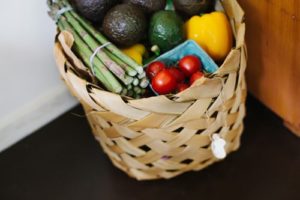 and branch out to foods that you might not otherwise try.
and branch out to foods that you might not otherwise try.
9. Go organic when you can.
While this may be more expensive sometimes, the negative health impact from toxic farming practices could be more expensive in the long run. When it comes to your health you either pay now or pay later. Buying foods in season from local sources may keep the costs down. Make purchase decisions according to the annual “Dirty Dozen” and “Clean 15” lists published annually by the EWG (www.ewg.org).
10. Supplement wisely.
 With the vast amount of information and resources on the internet, navigating what you should and shouldn’t be taking can be completely overwhelming. With my practice I use Fullscript, the safest and most convenient way to purchase professional-grade products. I also offer a supplement review consult, where we’ll take a hard look at your supplements, medications and official or working diagnosis to make sure you’re getting the most bio-available forms of nutrients and aren’t over-supplementing.
With the vast amount of information and resources on the internet, navigating what you should and shouldn’t be taking can be completely overwhelming. With my practice I use Fullscript, the safest and most convenient way to purchase professional-grade products. I also offer a supplement review consult, where we’ll take a hard look at your supplements, medications and official or working diagnosis to make sure you’re getting the most bio-available forms of nutrients and aren’t over-supplementing.
For more help and inspiration with family nutrition check out our Family Wellness Course.
This post contains affiliate links and is not meant to prescribe, dietary or supplement changes. Talk to your healthcare practitioner before makings any changes.


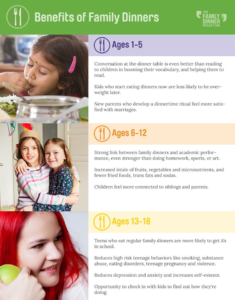
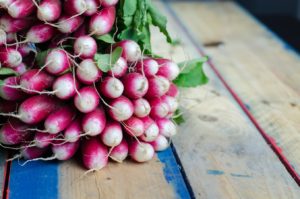
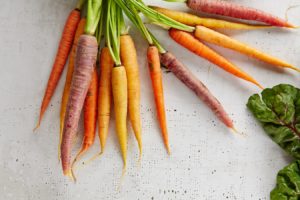

Pingback: Eating healthy with fewer grocery trips – Nielsen Integrative Nutrition LLC